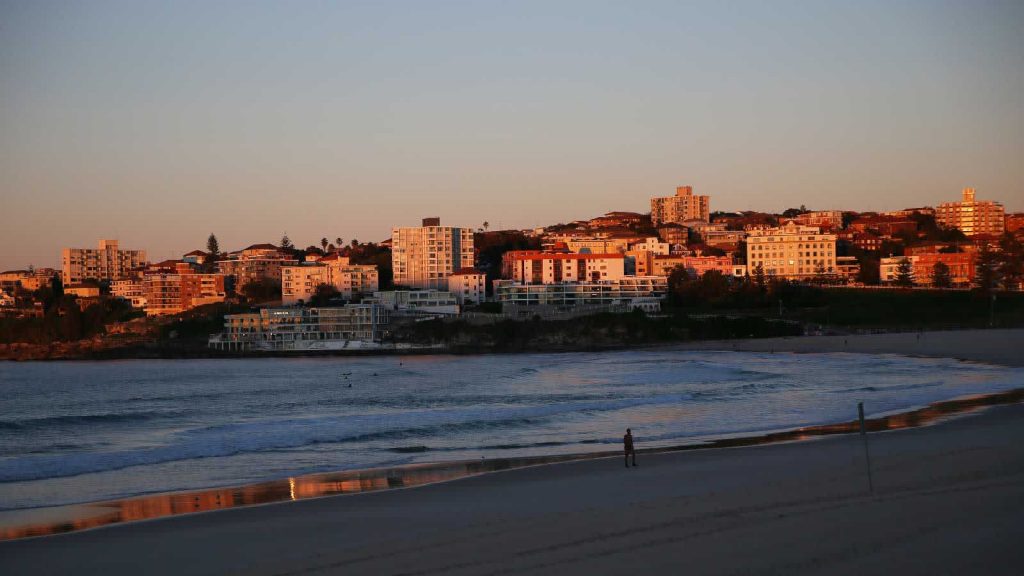With parts of the country still in lockdown (or teetering on the edge), it seems like Australia has really let slip the advantage we had over COVID.
We were doing so well! We were the envy of the world! While the US and the UK were in lockdown with COVID running riot, we were going to gigs, meeting friends in restaurants, and licking the faces of every passing stranger (maybe not that far).
Ah, happier times. Simpler times. Now with the new Delta variant in our midst, it looks like that advantage has well and truly slipped away and we’re going to have to vaccinate our way out of this mess. If only we’d treated the whole thing as a race and not become complacent because there wasn’t any COVID here, huh?
With some of the lowest vaccine numbers in the OECD, it’s going to take us a while to get to the point where we can ‘live with the virus’ — if that’s an option at all.
What are the target vaccination rates we need to hit in order to avoid the rolling lockdowns and ongoing restrictions? Well, it’s a little complicated, but here’s what we know.
Herd immunity
While 100% vaccination sounds like it should be the target — and in an ideal world, we would all be immune to COVID — it’s actually not possible, nor is it necessary.
There are people out there who can’t get the vaccine right now. Herd immunity, instead of total immunity, is the practical means by which we protect them without a vaccine.
Herd immunity is achieved when enough people within a group become immune to infection so that it is no longer able to spread freely in a community. We did this with polio and smallpox. Even though those diseases still exist, enough of us are immune to them that they can’t effectively spread.
Even if one person has the infection, if there are no viable hosts for that virus to jump to, it will quickly die out.
Herd immunity is the absolute gold standard that we want to achieve. However, there are unfortunately a good number of reasons why we might not be able to achieve that with COVID-19.
Vaccine levels to achieve immunity
The Grattan Institute recently released modelling, concluding that “it would be dangerous for Australia to open up before at least 80% of the population is vaccinated”.
80%, Stephen Duckett and Will Mackey from the Grattan Institute write, “Is the only scenario where the virus is managed, with hospitalisations and deaths kept down to reasonable levels.”
The models show that opening up with a 50% vaccination rate would cause “many, many thousands of deaths”.
A 70-75% rate of vaccination is a “gamble”. While it could work out, it also runs the risk of hospitals being overwhelmed and deaths spiraling.
“Opening the borders is a one-shot gamble,” they write.
“If you make the wrong call, the virus will quickly spread and all the good work and hard yards of living through lock-downs over the previous two years will have been wasted.”
For the Grattan Institute, a target of 80% appears to be the safest way to open up. While that might take a little longer to achieve, the difference in results could be huge.
The roll out strategy
On Friday, July 30, Prime Minister Scott Morrison announced that the national cabinet had agreed to a new lockdown escape strategy based on scientific modelling from the Doherty Institute and economic advice from Treasury.
Brandishing the new road map like a sorcerer invoking some ancient magic, Morrison outlined the plan that would see vaccinated Australians given priority treatment once 70% of the eligible adult population have received two doses of the vaccine.
International border rules will also be loosened at that point.
Once the national vaccination total hits 80%, lockdowns will no longer be used in major cities, all caps on flights will be abolished, and all restrictions on travelers leaving the country will be lifted.

“So if you get vaccinated, there will be special rules that apply to you,” Morrison said.
“Why? Because if you’re vaccinated, you present less of a public health risk. You are less likely to get the virus. You are less likely to transmit it.”
The PM said that lockdowns will continue to be used for now and that Delta presents a clear need for “early and stringent lockdowns” to deal with outbreaks.
Under the plan, states will have to individually hit vaccination targets as the full list of special rules for vaccinated Australians are still being worked out.
While this new plan is so late to the party it may as well be turning up as the sun rises and all the guests have gone home, it does finally give us a clear path out of restrictions.
Normality, not immunity
The bad news is that scientists are now moving away from the idea that we’ll be able to achieve herd immunity with COVID-19.
Vaccine hesitancy, the delayed arrival of vaccinations suitable for children, and, most of all, the emergence of new COVID variants, have led scientists to believe that we won’t be able to effectively hit this number and vaccinate our way out of the pandemic.
We also are still uncertain about how long immunity might last from a vaccine against COVID, with some thinking the virus could become a seasonal epidemic like the flu.
Dr Stephen Duckett, health program director at the Grattan Institute, has said that Morrison’s phased targets are “almost too vague to comment on”.
“It doesn’t give you any specificity whatsoever but it serves the political purpose of having a plan,” he said.
“It’s a very puzzling plan, which is vague, risky, and the other point about it is there’s no clear strategy to actually get there. What is the strategy to actually achieve the targets they’ve specified?”
Crucially, the vaccine target numbers are too low to effectively stop the spread of COVID. Grattan Institute modelling recommends an 80% vaccination rate across the whole population. Morrison’s plan only includes those eligible and above the age of 16.
That means and 80% rate is more like 62% of the entire population.
This discrepancy reflects the complexities and challenges of a global pandemic, but it shouldn’t make the vaccine rollout seem ineffective.
“The vaccine will mean that the virus will start to dissipate on its own,” epidemiologist Lauren Ancel Meyers has said. “We may find ourselves months or a year down the road still battling the threat, and having to deal with future surges”.
This is obviously terrible news. The good news however is that we might not have to achieve herd immunity to return to some semblance of normality.
So, what can we do?
‘Living with the virus’ is a phrase trotted out by those who oppose lockdown at any price. It’s not a completely terrible idea, just one that can’t happen right now.
COVID-19 and its variants are dangerous, highly transmissible, and pose both short and long-term health risks to those who catch it.
Vaccination is one way to reduce the impact of COVID, if not the transmission.
Vaccine transmissibility is rated on an R-value scale. The higher the number, the more transmissible. What epidemiologists do in their modelling is base the spread of a virus on the random interaction of people within the population.
However, people don’t interact randomly, they actually interact in highly structured, routine ways. That could mean that a rate much lower than 70% could be needed before herd immunity kicks in. Couple this with the fact that we might only need to vaccinate certain categories of people and the rate needed could be as low as 30%.
Human behaviour, however, also works against us. Once more people are vaccinated, the more likely we are to engage in risky behaviours that promote the spread of the virus.
We also can’t forget the fact that the vaccine rollout is not uniform. While Australia, with 15% of its population fully vaccinated, is behind, say, Mongolia, with 60% of its population vaccinated, we’re far ahead of Nigera, which has only 0.68% of its population vaccinated.
That means of course that while some populations can be relatively immune to COVID, others won’t be. While there is still the danger of COVID being transmitted across borders and mutating in populations with high case numbers, border restrictions will likely remain in place for some time.
This being said, with a high vaccination rate, it’s likely that we will be able to remove some of those restrictions before hitting the magical 80% target.
The UK has recently — and, some have said, recklessly — removed all COVID-19 restrictions, even though its case numbers are in the tens of thousands each day.
That’s because the UK has managed to fully vaccinate some 56% of its population, with 70% having had at least one dose. This hasn’t stopped transmission of course, but it has rapidly decreased the number of deaths and hospitalisations.
Singapore too has decided to live with the virus. With 47% fully vaccinated, and 73% with a single dose, Singapore is planning to open the country up without COVID restrictions over the next few months.
NSW Premier Gladys Berejiklian has said that about five million people in the state would need to be fully vaccinated before borders open — around 80% of the state.
Our current trajectory, which is ramping up, puts December 2021 as the projected date in which we hit that 80% vaccination rate of those above the age of 16. Even though this won’t give us complete immunity to the virus, at some stage, we will simply have to open up and learn to live with the virus as its impact is lessened by the vaccines.
To further boost our vaccination capacity, The Grattan Institute wants the government to rapidly implement a ramped-up advertising campaign, introduce financial incentives like a weekly $10 million lottery, bring in mandatory vaccines in some industries, and vaccinations in schools and workplaces once extra Pfizer doses arrive in October.
For the initial part of that transition, lockdowns and restrictions will remain in place, but, as we experiment with new ways of living, it ought to become easier to go about our daily lives.
Read more stories from The Latch and subscribe to our email newsletter.







